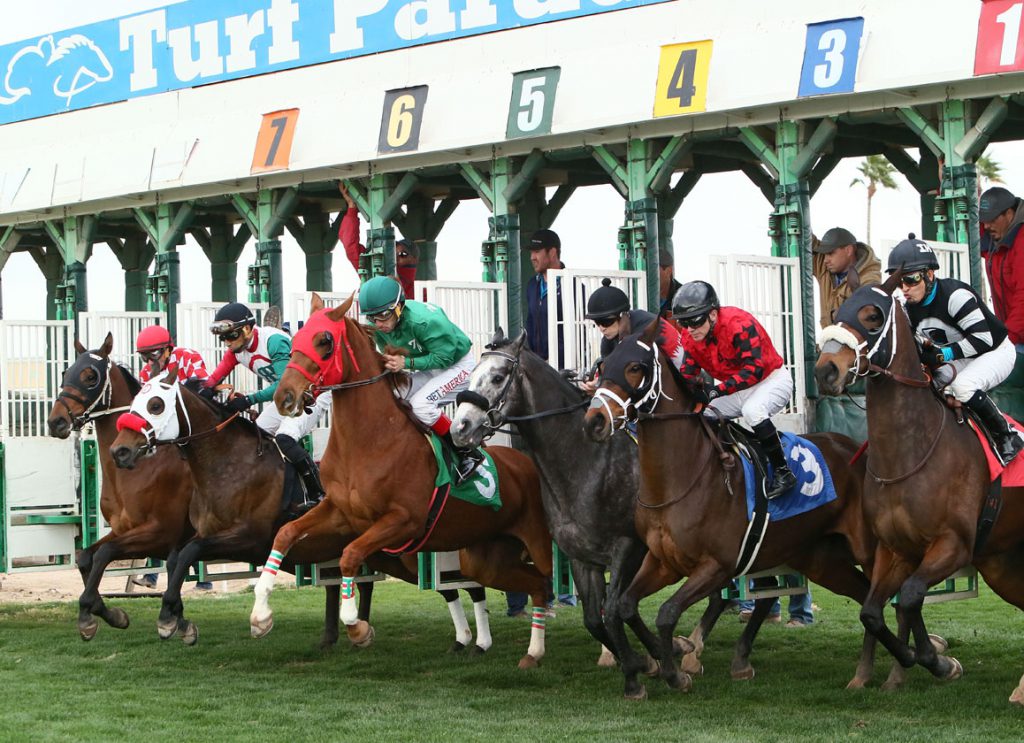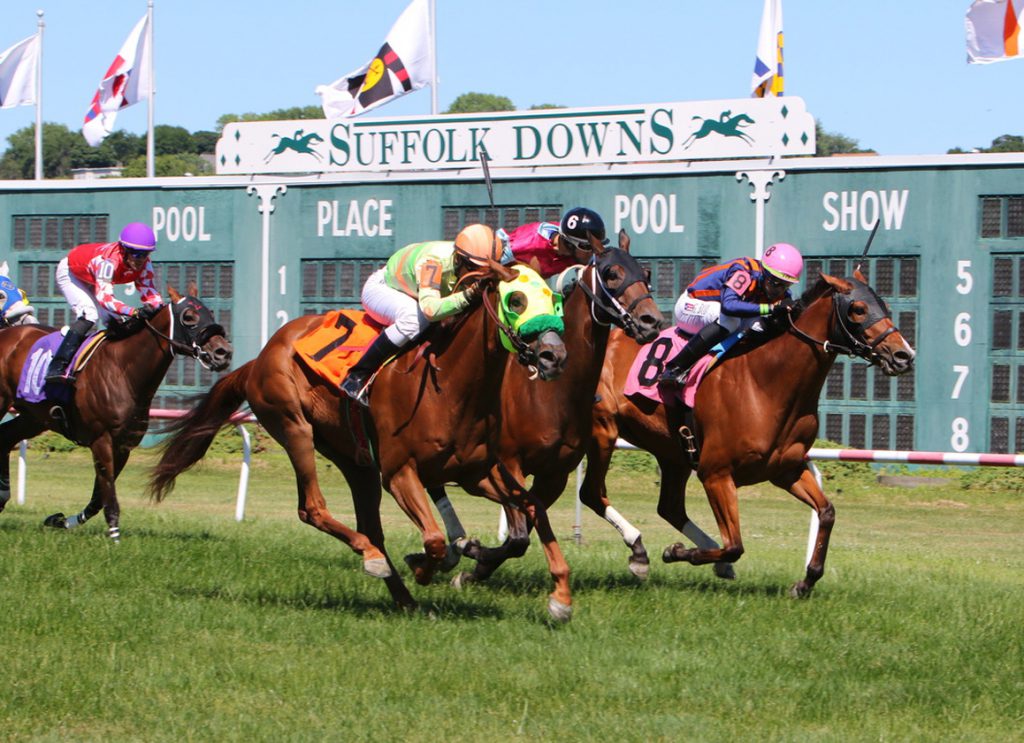Standing in the first stall on the left in the Clark family's cozy barn at their farm in Springfield, Ky., ears pricked and head on a constant swivel in search of the next treat, Golovkin appears right at home. One would never guess that the 5-year-old gelded son of Mshawish had just shipped from Monmouth Park, nor that he was the center of Horseracing Integrity and Welfare Unit (HIWU) findings against his racing owner/trainer John Pimental.
The story was first shared by the TDN's T. D. Thornton on Oct. 20, detailing the life-changing ramifications for Pimental and his wife, Diana, stemming from Golovkin testing positive for 193 picograms per milliliter of methamphetamine following his sixth-place finish in a May 29 sprint at Monmouth Park.
A July 28 visit from HIWU agents not only made the Pimentals aware of the meth positive but subsequently revealed Levothyroxine in their truck during a search conducted by the agents, resulting in John facing a three-year period of ineligibility (18 months per violation) and a fine of $25,000 ($12,500 per violation) after agreeing to a “case resolution without hearing.” It was the only option he felt was feasible after being unable to afford hiring a lawyer to contest the HIWU's charges of two violations of “banned substances” under the Horseracing Integrity and Safety Act (HISA)'s Anti-Doping and Medication Control (ADMC) Program.
But what about Golovkin? Claimed for $5,000 on the day he tested positive, he raced twice more over the next two months for new connections before the ruling against John voided the claim, resulting in the bay gelding's return to the Pimentals' barn. It was just Golovkin and his stablemate, Richard the pony, left in a nearly empty barn on the Monmouth backstretch.
Acknowledging the rule violations and accepting his consequences led to John signing away his licensure, forbidding him from working in any capacity that puts him in contact with HISA-covered horses. Meanwhile, the Pimentals were restricted to visiting and feeding their remaining horses at the track just twice a day until new homes were found for them.
The Pimentals had been having a hard time finding Golovkin a home due to his mandatory 60-day period of inactivity as a result of the positive, until the TDN story came out. That's when bloodstock agent Lauren Carlisle stepped in.
Already in conversation with her friends Radhika Clark, Director of Operations for Morning Line Club; Sarah Thompson, bloodstock agent for Equix; and Hagyard's Dr. Megan Cassidy about rehoming another horse, Carlisle forwarded the article to the group and the wheels were set in motion.
“I read it and I was pretty upset about the circumstances and the way it affected the Pimentals and this horse, in particular. I had copied the article, sent it to the group and I said, “We need to try to help this horse, this is not a good situation,” she recalled.
They immediately leapt into action, sending texts, making calls and replying to tweets to any and all connections that could possibly get them in touch with the Pimentals. Concurrently, Carlisle reached out to Glenn Brok at Brooke Ledge Horse Transportation.
Despite the late hour, Brok called within minutes and Carlisle proceeded to explain the situation. By the next morning, he'd been in touch with Diana and connected her with Carlisle.
The plan was set, Golovkin would be heading to Kentucky.
“The horse couldn't race for 60 days because of the positive and no other trainer wanted to take that horse in, understandably, but it was just a lose-lose situation for everybody. Diana was very thankful and appreciative. She did confirm with me that she wants the horse to be retired and not race again. She was very up front about that,” said Carlisle. “She said that [Golovkin] has been through a lot and she's happy that he's going to have a new home. I texted her when the horse got here and I sent her pictures, so she's been very communicative that way. She's the one that told me how much he likes peppermints and carrots.
“I told her, 'Keep my phone number. If you need help with anything else, please don't hesitate to reach out.'”
From the very beginning, Clark and her mother, Sonia, had offered their farm as Golovkin's soft landing. In less than a week after Carlise's initial call with Diana, Brook Ledge had a spot open up in one of their vans and Golovkin was on his way, free of charge thanks to the support of the transportation company.
“I had several people reach out. [Fasig-Tipton's] Jesse Ullery called me the next morning. He'd seen what I'd put on Twitter trying to find their phone number and he wanted to help. Kirsten [Johnson] with KESMARC called and said if the horse needs any sort of rehab, she will help with that. There have been a lot of people that just wanted to help this horse,” said Carlisle. “The whole thing is unfortunate, but it doesn't mean that a horse has to be stuck at a racetrack in a stall.”
Golovkin arrived at the Clarks' farm the morning of Thursday, Oct. 26. After getting a quick bath upon arrival, the gelding settled into his new stall and joined the herd that includes 3-year-old Elegance (Into Mischief), a fellow Off-the-Track-Thoroughbred, and a few other retirees.
“He has a really good personality. As soon as I was in the stall with him, he was super playful. He just wants to play! He came off the trailer without a scratch on him, so you know he traveled well and you can tell he was really well cared for by Diana and John. He's in really great body condition, he looks awesome, so that's a testament to them. They did everything they could for that horse,” said Clark. “Dr. Cassidy looked at him and took some X-rays. There are a couple things we're going to verify and re-check but so far, we're pretty happy with him and we're just going to give him some time to settle in.”
The four industry women that came together initially to bring Golovkin home were all on hand the day after he arrived and the gelding was more than content to soak up all of the attention.
“I'm going to mess with him a bit here and see what he can do. But past that, we'll reach out to some people. If he is eligible for a second career then that's what he's going to do. If he needs to just hang out in a field all day, he's got the field, it's here. Either way he'll have a home and he'll always have a place to come back to if he needs it,” said Clark.
As the gelding now fondly known as 'Go-Go' stood in the aisleway of the barn, a hind foot resting and head low as the farm dogs wandered around him, it's easy to see why he meant so much to the Pimentals, even more so after all they've been dealt this year.
“I understand they're trying to create rules and enforce them, but at the end of the day, now you've got a horse that's pretty much stranded. That's not helping the animal, which is who we're trying to protect. It's a little bit ironic,” said Carlisle. “Radhika and her mom Sonia, they really stepped up in giving him a place to go and not asking any questions about it. Megan is going to come back out to do another physical on the horse and she's offering her time at no charge. These are the people that need to be recognized.”
Thornton followed up with the Pimentals, in a TDN story published Oct. 25, revealing that Alan Foreman, an attorney who is the chairman and chief executive of the Thoroughbred Horsemen's Association, is handling their defense and has managed to get John's signed admission withdrawn so the case can proceed to a hearing.
Meanwhile, the pony Richard is heading to Tampa Bay Downs this winter with trainer Gerald Bennett. The Pimentals will be making their way to Florida as well, where Diana has a job in the Tampa Bay racing office for the upcoming meet.
“We are all working against each other here and there's a lot of competition in our industry with people wanting to win races and just be better, but when the time comes that somebody needs help or a horse needs help, it's not even a question. Everybody chips in to help. That's just a testament to the people that work in this industry,” said Carlisle.
The post Coming Together For Golovkin appeared first on TDN | Thoroughbred Daily News | Horse Racing News, Results and Video | Thoroughbred Breeding and Auctions.





